
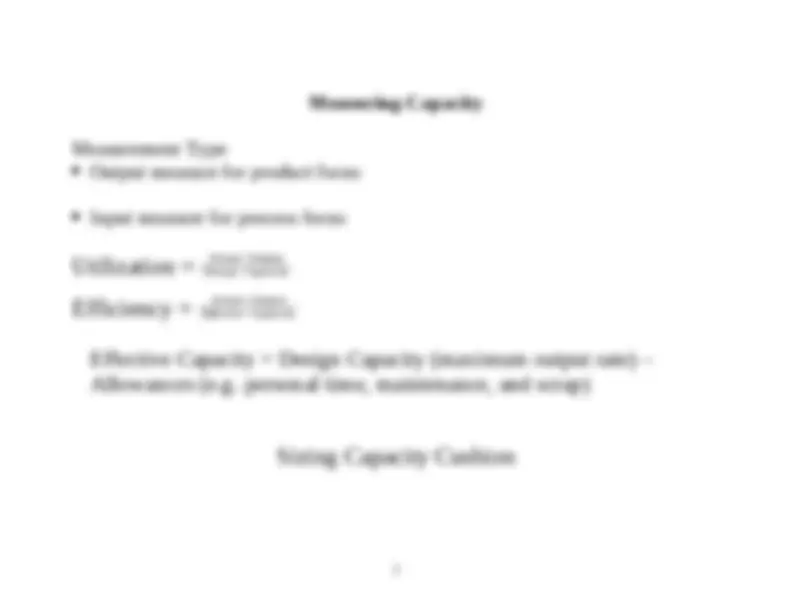
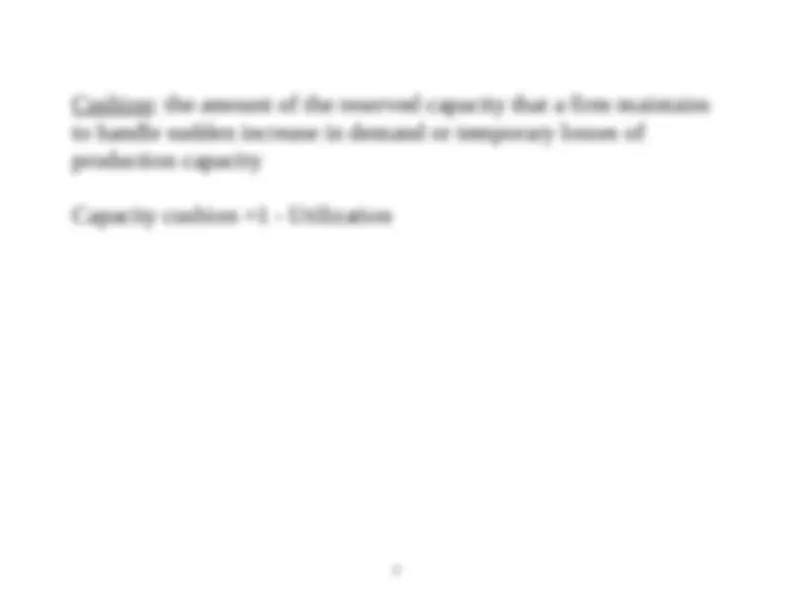
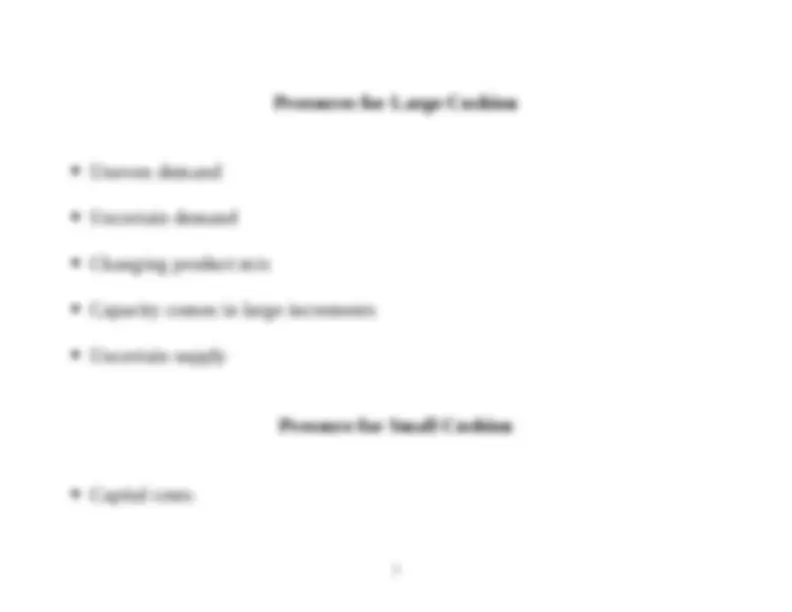
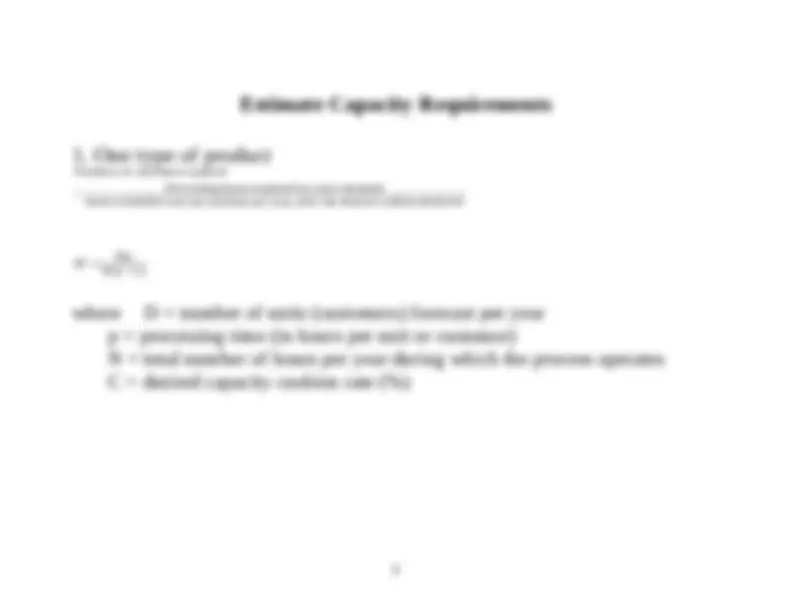
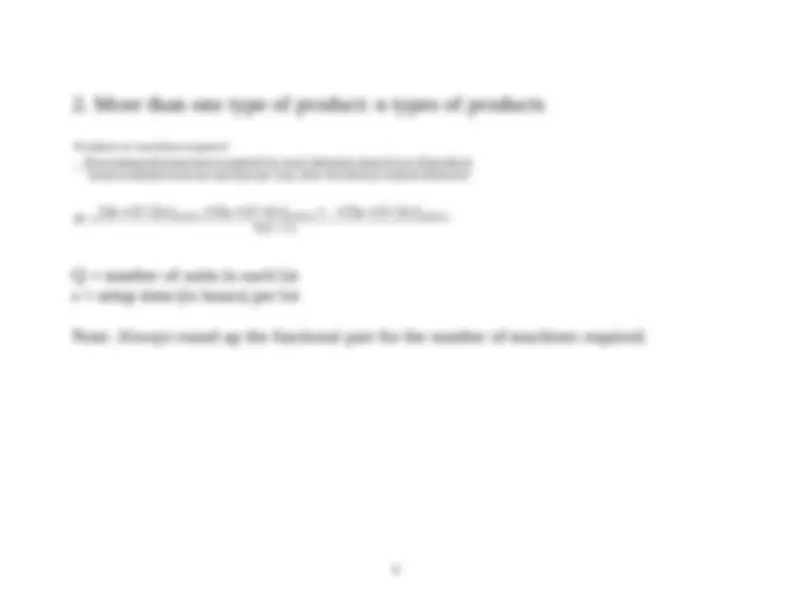
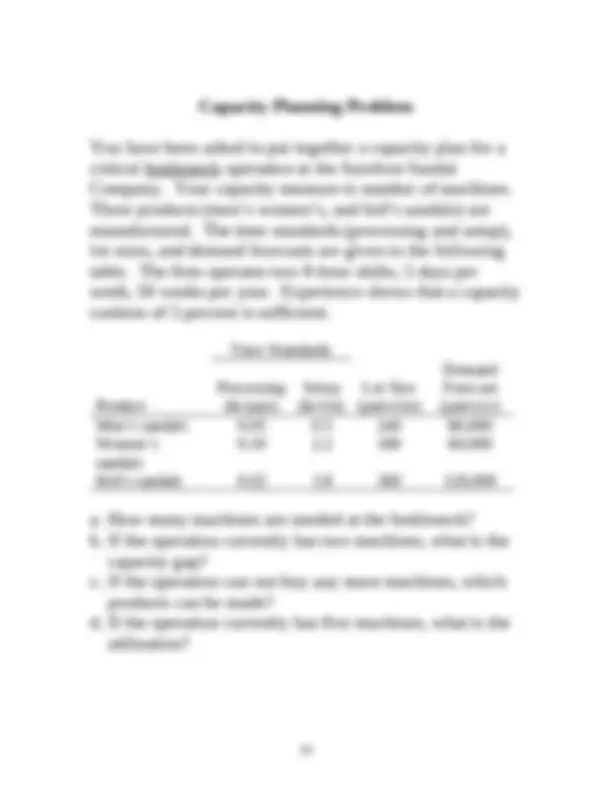
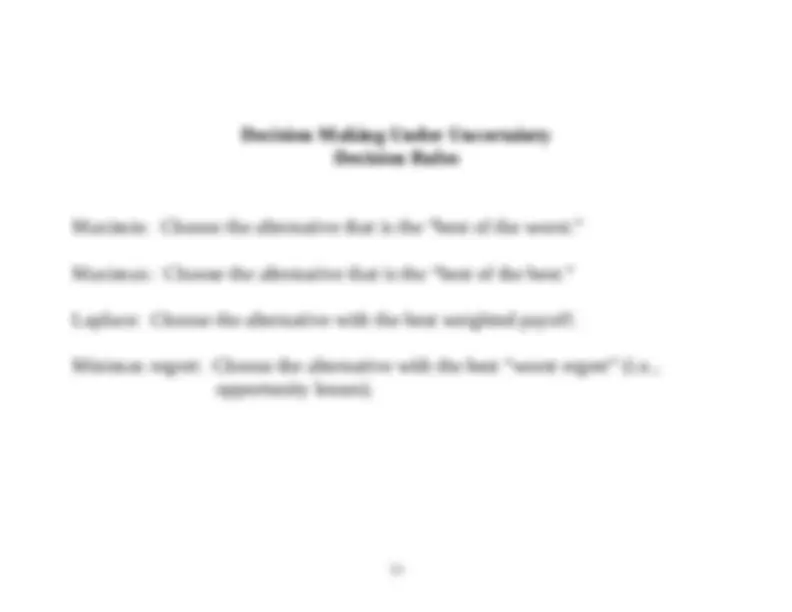
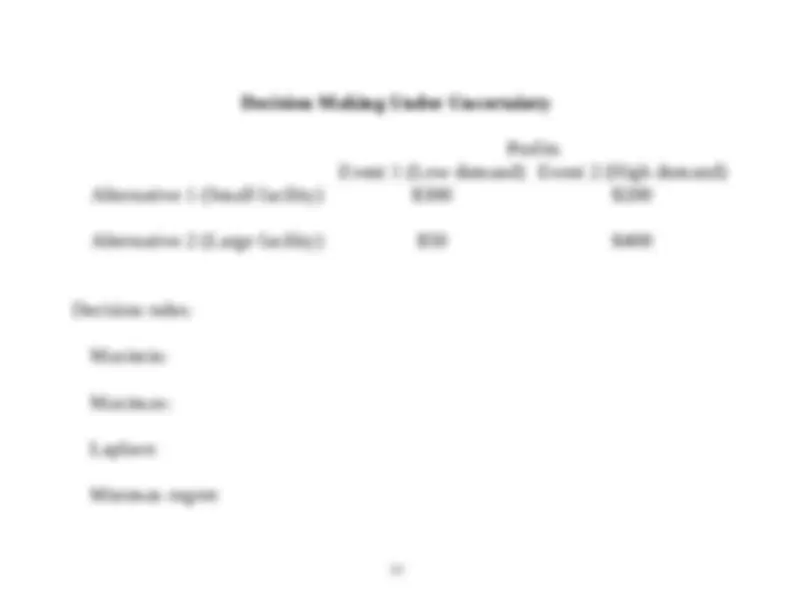
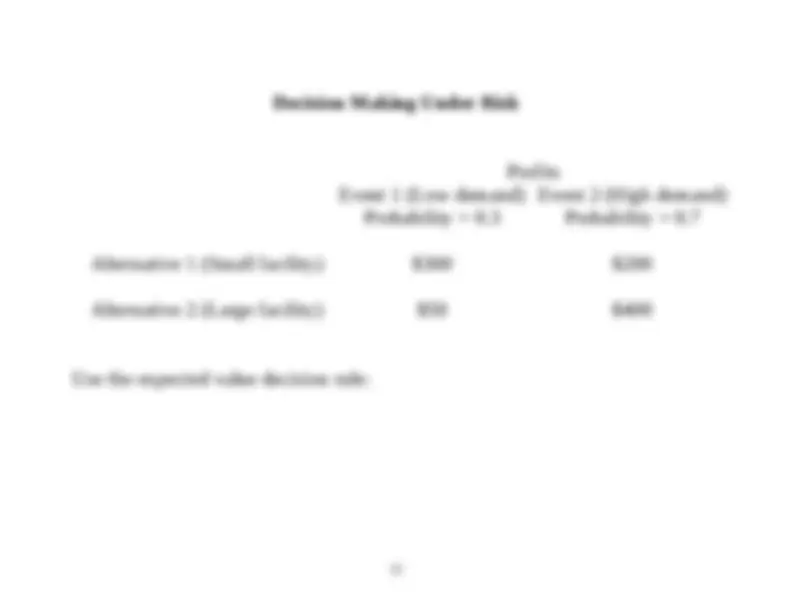


Study with the several resources on Docsity

Earn points by helping other students or get them with a premium plan


Prepare for your exams
Study with the several resources on Docsity

Earn points to download
Earn points by helping other students or get them with a premium plan
Community
Ask the community for help and clear up your study doubts
Discover the best universities in your country according to Docsity users
Free resources
Download our free guides on studying techniques, anxiety management strategies, and thesis advice from Docsity tutors
An overview of capacity planning, focusing on measures of capacity, bottlenecks, capacity strategies, and decision theory. Topics include measuring capacity, capacity cushion, and a systematic approach to capacity decisions. The document also covers the make or buy problem and decision making under uncertainty and risk. Students will learn about capacity requirements, identifying gaps, developing alternatives, and evaluating alternatives.
Typology: Study notes
1 / 15

This page cannot be seen from the preview
Don't miss anything!










MD 021 - Management and Operations Capacity Planning and Decision Theory Measures of capacity Bottlenecks Capacity strategies A systematic approach to capacity decisions Make or Buy Problem Decision Making Under Uncertainty and Risk, Decision Trees
Capacity Planning Capacity is the maximum rate of output for a facility. Capacity planning considers questions such as: · Should we have one large facility or several small ones? · Should we expand capacity before the demand is there or wait until demand is more certain?
Pressures for Large Cushion · Uneven demand · Uncertain demand · Changing product mix · Capacity comes in large increments · Uncertain supply Pressure for Small Cushion · Capital costs
A Systematic Approach to Capacity Decisions
hoursavailablefromonemachineperyear,after thedesiredcushion deducted Processinghoursrequiredforyear's demand = Numbersofmachines required N ( 1 C ) Dp M where D = number of units (customers) forecast per year p = processing time (in hours per unit or customer) N = total number of hours per year during which the process operates C = desired capacity cushion rate (%)
Capacity Planning Problem You have been asked to put together a capacity plan for a critical bottleneck operation at the Surefoot Sandal Company. Your capacity measure is number of machines. Three products (men’s women’s, and kid’s sandals) are manufactured. The time standards (processing and setup), lot sizes, and demand forecasts are given in the following table. The firm operates two 8-hour shifts, 5 days per week, 50 weeks per year. Experience shows that a capacity cushion of 5 percent is sufficient. Time Standards Product Processing (hr/pair) Setup (hr/lot) Lot Size (pairs/lot) Demand Forecast (pairs/yr) Men’s sandals 0.05 0.5 240 80, Women’s sandals 0.10 2.2 180 60, Kid’s sandals 0.02 3.8 360 120, a. How many machines are needed at the bottleneck? b. If the operation currently has two machines, what is the capacity gap? c. If the operation can not buy any more machines, which products can be made? d. If the operation currently has five machines, what is the utilization?
Capacity Planning Problem Solution Total time available per machine per year: (2 shifts/day)(8 hours/shift)(5 days/week)(50 weeks/year) = 4000 hours/machine/year With a 5% capacity cushion, the hours/machine/year that are available are: 4000(1-0.05) = 3800 hours/machine/year Total time to produce the yearly demand of each product: (This is equal to the processing time plus the setup time.) Men’s =(0.05)(80,000)+(80,000/240)(0.5)= 4167 hrs Women’s =(0.10)(60,000)+(60,000/180)(2.2)= 6733 hrs Kid’s =(0.02)(120,000)+(120,000/360)(3.8)= 3667 hrs Total time for all products =4167+6733+3667= 14567 hrs a. Machines needed = (14,567/3800) = 3.83 = 4 machines b. Capacity gap is 4 - 2 = 2 machines c. With two machines, we have (3800)(2) = 7600 hours of machine capacity. We can make all of the women’s sandals (6733 hours) and some of the men’s sandals, for example. d. With five machines, (5)(4000) = 20,000 machine-hours/yr are available. The total number of machine-hours/yr needed for production are 14,567. Utilization = (14,567/20,000)(100%) = 73%. Thus, the capacity cushion is (100% - 73%) = 27%.
Decision Making Under Uncertainty Decision Rules Maximin: Choose the alternative that is the “best of the worst.” Maximax: Choose the alternative that is the “best of the best.” Laplace: Choose the alternative with the best weighted payoff. Minimax regret: Choose the alternative with the best “worst regret” (i.e., opportunity losses).
Decision Making Under Uncertainty Profits Event 1 (Low demand) Event 2 (High demand) Alternative 1 (Small facility) $300 $ Alternative 2 (Large facility) $50 $ Decision rules: Maximin: Maximax: Laplace: Minimax regret: